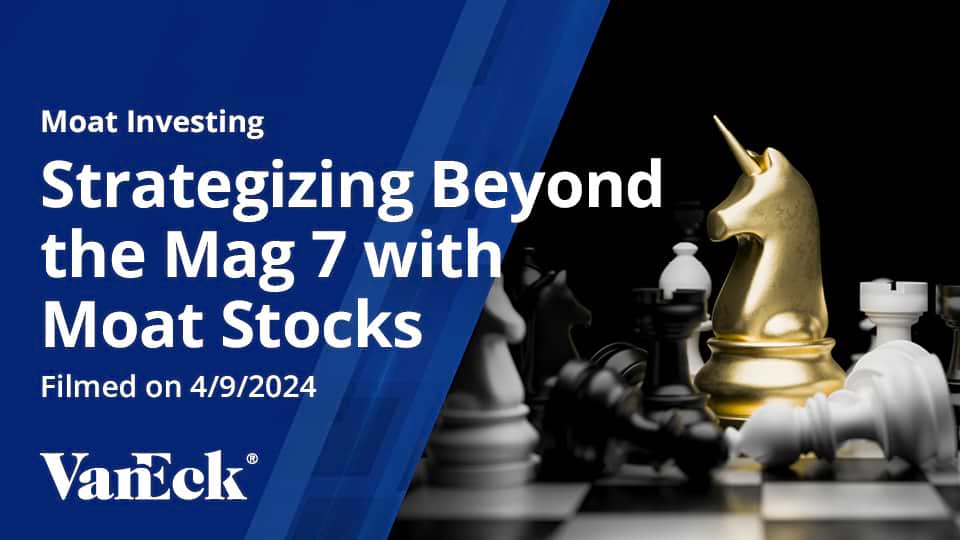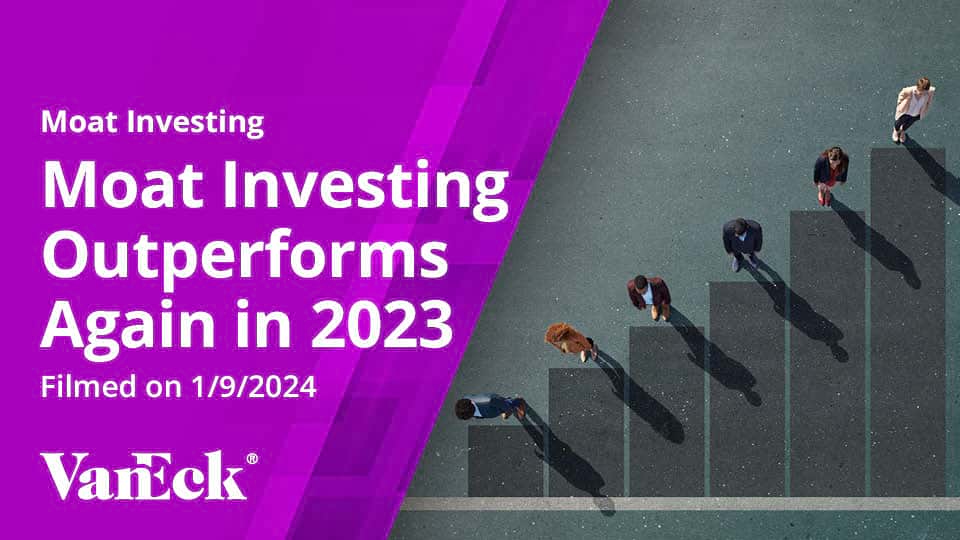Moat Investing: Capturing Opportunity Amid Volatility
06 July 2022
Read Time 4 MIN
Historically, the Morningstar Wide Moat Focus Index’s valuation methodology has led to high returns in broad U.S. equities following periods of sizeable market declines.
June was another volatile month with sizeable declines in the U.S. equity market; however, the Morningstar® Wide Moat Focus IndexSM (the “Moat Index” or “Index”) proved more resilient than the broad market. The Moat Index outperformed the S&P 500® Index for the month (-7.48% vs. -8.25%, respectively) and furthered its outperformance YTD (-15.92% vs. -19.96%, respectively), as of June 30, 2022.
Rebalancing into Opportunity
Market volatility can be the cause of turmoil for many investors, but for the Moat Index, it can provide potential to capture opportunity in irrationally oversold stocks. At each regularly scheduled quarterly review, the Index reassesses valuation opportunities among U.S. wide moat companies and allocates to those with the most attractive prices relative to their Morningstar-assigned fair value estimate.
The Index’s most recent review took place on June 17. This is noteworthy, as it took place nearly concurrent to the S&P 500 Index marking a fresh low for 2022 and officially entering bear market territory. Historically, the sort of valuation opportunities captured by the Moat Index during periods of sizeable U.S. equity market declines have led to elevated excess returns over broad U.S. equities in the following periods.
Sizeable Market Declines Have, on Average, Preceded Excess Returns
2/28/2007 - 5/31/2022
Source: Morningstar. Data as of 5/31/2022. All returns are annualized.
Index performance is not illustrative of Fund performance. Fund performance current to the most recent month end is available by visiting vaneck.com or by calling 800.826.2333. Past performance is no guarantee of future results. Indexes are unmanaged and are not securities in which an investment can be made.
Key Takeaways from the Moat Index’s Q2 Review
As mentioned above, the Moat Index underwent its regularly scheduled quarterly review on June 17, 2022. Below are a few key takeaways from the review.
Index Valuation Drops to Near Five-Year Lows
As of June 17, 2022, the reconstituted Moat Index exhibited a weighted average Price/Fair Value ratio (“P/FV”) of 0.64 signaling a 36% discount to Morningstar’s assessment of fair value. This is in contrast to the S&P 500 Index, which featured a weighted average P/FV ratio of 0.82 for the same date. For context, the Morningstar Wide Moat Index’s five year average P/FV was 0.87 and S&P 500 Index’s was 1.03 and they dropped as low as 0.62 and 0.77 over the last five years, respectively, in March 2020.
Style Exposure and Sector Shifts
Similar to the previous review in March, the Index’s growth style exposure again saw a notable increase representing valuation opportunities among wide moat growth stocks following the volatility of the past several months. The increase in growth exposure was at the expense of value exposure, which declined by a roughly equal amount. However, value remains notably overweight relative to the S&P 500 Index.
From a sector perspective, the Index saw several consumer staples companies removed this quarter (Campbell Soup Co. and Constellation Brands, among others) due to rich valuations. This reduced consumer staples exposure from the Index’s largest overweight to a now only slight overweight relative to the S&P 500 Index. The industrial sector is now the largest overweight and energy the greatest underweight following the June review.
Index Newcomers
Once again this quarter, despite not often seeing new companies enter the Moat Index for the first time, a few names were added to the Index for the first time in its over 15 year live history. Three companies were added to the Index for the first time, in Q2 2022.
- Rockwell Automation (ROK): Added to the Index for the first time since being upgraded to wide moat from narrow in December 2012. The industrials automation firm had previously not presented enough of a relative valuation opportunity to be included in the Index.
- TransUnion (TRU): Now joining Equifax within the Index, TransUnion has had a wide moat rating but had never been selected for Index inclusion based on the price/fair value screen.
- Workday Inc. (WDAY): A cloud-only human capital management software provider, Workday Inc. was added for the first time since being upgraded from a narrow to wide moat rating in August of 2020.
VanEck Morningstar Wide ETF (MOAT) seeks to replicate as closely as possible, before fees and expenses the price and yield performance of the Morningstar Wide Moat Focus Index.
Related Insights
This material may only be used outside of the United States.
This is not an offer to buy or sell, or a recommendation of any offer to buy or sell any of the securities mentioned herein. Fund holdings will vary. For a complete list of holdings in VanEck Mutual Funds and VanEck ETFs, please visit our website at www.vaneck.com.
The information presented does not involve the rendering of personalized investment, financial, legal, or tax advice. Certain statements contained herein may constitute projections, forecasts and other forward looking statements, which do not reflect actual results. Information provided by third-party sources are believed to be reliable and have not been independently verified for accuracy or completeness and cannot be guaranteed. Any opinions, projections, forecasts, and forward-looking statements presented herein are valid as of the date of this communication and are subject to change without notice. The information herein represents the opinion of the author(s), but not necessarily those of VanEck.
The views contained herein are not to be taken as advice or a recommendation to buy or sell any investment in any jurisdiction, nor is it a commitment from Van Eck Associates Corporation or its subsidiaries to participate in any transactions in any companies mentioned herein. This content is published in the United States. Investors are subject to securities and tax regulations within their applicable jurisdictions that are not addressed herein.
All investing is subject to risk, including the possible loss of the money you invest. As with any investment strategy, there is no guarantee that investment objectives will be met and investors may lose money. Diversification does not ensure a profit or protect against a loss in a declining market. Past performance is no guarantee of future results.
Related Insights
09 January 2024

